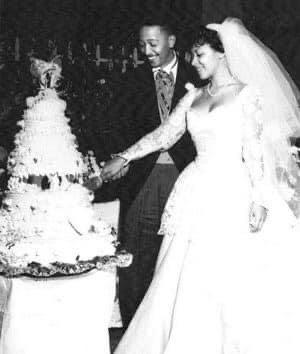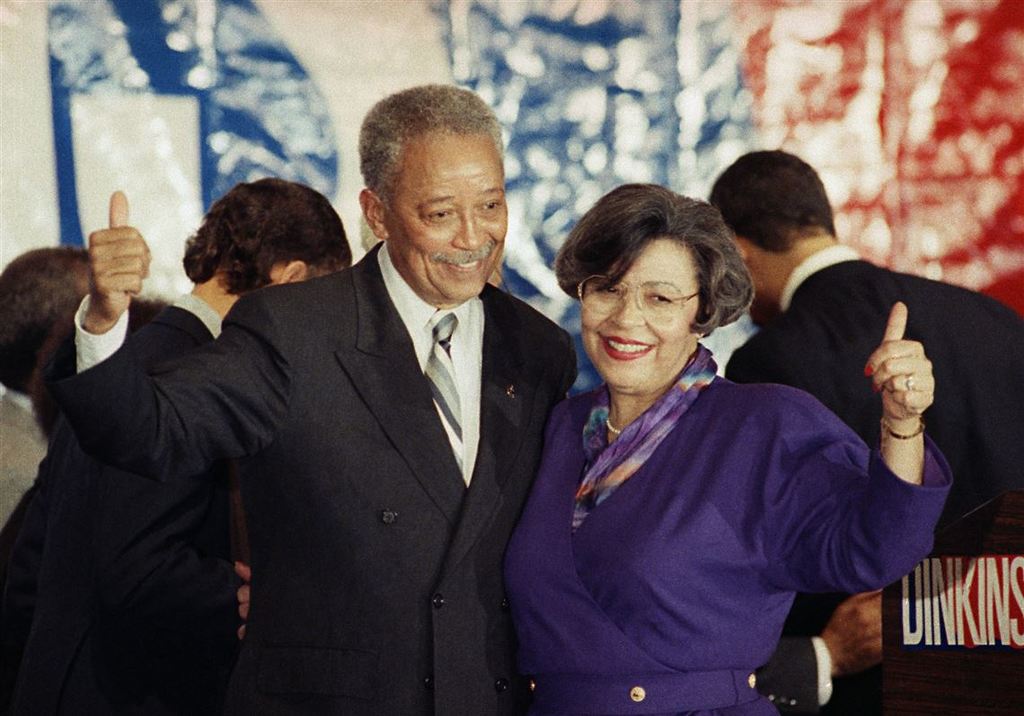An honorable ancestor!
David Norman Dinkins, the first and only Black mayor of New York City, died on Monday night at 93-years-old, a month after his beloved wife Joyce passed. Dinkins was born in Trenton, N.J., on July 10, 1927, to Sally and William Harvey Dinkins Jr., who had recently moved up north the previous year from Virginia. When he was in first grade, his parents separated and later divorced, with his mother moving to Harlem with him and his younger sister, Joyce, working as a dollar-a-day domestic servant.
Dinkins and his sister moved back to Trenton to live with their father and new stepmother, Lottie Hartgell. He graduated from Trenton Central High School in 1945 and served in the Army before transferring to the Marine Corps, spending 13-months at Camp Lejeune in North Carolina. After being discharged in August 1946, he enrolled at Howard University in Washington D.C. on the G.I. Bill, majored in mathematics, pledged Alpha Phi Alpha, Fraternity Incorporated, and graduated with honors in 1950.
While at Howard, he met his future wife, Joyce Burrows, a sociology major, and they married after she graduated from the university in 1953. The couple moved to Harlem, near Burrows’ family and went on to have two children, David Jr. and Donna Dinkins Hoggard. His wife’s father, Daniel L. Burrows, one of the first Black men to serve in the New York State Assembly, became close with Dinkins and urged him to run for political office and became his mentor.
 Photo Courtesy of Michael Henry Adams/Facebook
Photo Courtesy of Michael Henry Adams/Facebook
Dinkins worked nights at his father-in-law’s liquor store while attending Brooklyn Law School, where he graduated in 1956. He then joined a firm that would eventually become Dyett, Alexander & Dinkins, a banking, probate, and real estate practice. Dinkins also became a member of the Carver Democratic Club, run by J. Raymond Jones, a.k.a. the Harlem Fox, who mentored many business and political leaders in the city. In 1965, Jones helped him win an election to New York State Assembly where he stayed for one term and then became president of the city’s Board of Elections from 1972-73, where he widened voter rolls.
He went on to run for Manhattan borough president in 1977 and 1981 before winning in 1985. During that time, he gained a reputation for looking out for the needs of disenfranchised groups, the LGBTQIA community, and people with AIDS. His popularity pushed people to ask him to run for mayor following the Central Park Five sexual assault case and the death of Yusuf K. Hawkins, the 16-year-old Black teenager murdered by an angry mob in Brooklyn, which caused racial unrest.
He brought together a collection of labor unions and community leaders to rally for him throughout his campaign. He beat the incumbent Mayor Edward I Koch in the primary. He defeated Republican nominee, the now-disgraced former mayor Rudy Giuliani in November by what was called one of the century’s narrowest mayoral margins. Dinkins’ historic nomination ensured New York would become the last of the nation’s ten largest cities to elect a Black mayor. On Jan. 1, 1990, at 62-years-old, he was sworn in before 12,000 excited supporters in City Hall Park.
“I stand before you today as the elected leader of the greatest city of a great nation, to which my ancestors were brought, chained, and whipped in the hold of a slave ship,” Dinkins said during his inauguration as 106th mayor of New York City. “We have not finished the journey toward liberty and justice, but surely we have come a long way.”

Photo Credit/The New York Times
He also selected an inclusive set of leaders with Lee P. Brown, a Black veteran of the Atlanta and Houston forces, becoming police commissioner. He elected the first Black, openly gay psychiatrist as mental health commissioner, the first Puerto Rican fire commissioner, two women deputy mayors, and several other women became commissioners of finance, parks, human resources, housing, and investigations.
Although he inherited huge debts and the worst crime levels in the city’s history, he managed to keep city libraries open, revitalized Times Square, and worked to rehabilitate public housing across the five boroughs. Following his term as mayor, Dinkins became an elder statesman who taught at Columbia University, hosted a radio talk show on WLIB, attended events around the city, and consulted with Mayor Michael R. Bloomberg and others occupying or seeking office.
Leaders across the country mourned the loss of the historic political figure. New York City’s current Mayor, Bill de Blasio, who worked in the Dinkins administration where he met his wife, Chirlane McCray, spoke to reporters Tuesday saying, ”He simply put us on a better path, and he did it with heart and warmth and love. He was animated by love for people, all people.”
Howard University’s Moorland-Spingarn Research Center posted a tribute with his yearbook photo.
Rest In Power to Howard alum and the 1st and only black mayor of NYC, David Dinkins class of 1950. Here he is from the 1950 yearbook. pic.twitter.com/SbRzgBHPgj
— Moorland-Spingarn (@MoorlandHU) November 24, 2020
Jamaal T. Bailey, senator for the 36th District, thanked Dinkins for leading the way for him.
“Mr. Dinkins, won’t you please be my mayor..”
advertisementRest In Peace to a true trailblazer and legend, Mayor David Dinkins. People like me follow in your footsteps. Representation matters. Thank you for paving the way for us. 2020, man. https://t.co/6mH3mPbp6x
— Jamaal T. Bailey (@jamaaltbailey) November 24, 2020
Had the great opportunity to interview Mayor Dinkins for 13TH. He was wonderful and warm and wise. May he rest in peace and power. https://t.co/KfZ97wRrds
— Ava DuVernay (@ava) November 24, 2020
He is survived by his children, two grandchildren and his sister, Joyce Belton.
Thank you for walking so that we could run.
Photo Credit: The Pittsburgh Post-Gazette

